Specifications and Main Features
- Sound Quality: 12-bit PCM format with a 32khz samplin rate across 24 different drums and percussion sounds.
- Touch Response: The performer's controls with adjust each sound source's touch sensitivity to varying levels.
- Programming Ease: All sensory sources have controls for LEVEL, SENSITIVITY, TUNE and PAN which can also be seen on a screen in bar graph format.
- Tune and Pan Control: During pattern recording each note can be configured with respect to each tune and pan settings.
- Line Outputs: Features stereo phone and mono outputs, in addition, there are eight separate channel outputs.
- Editing Functions: There are several recording techniques: real-time, step and new functions PUNCH IN/OUT, REPEAT, JUMP, allow very precise chain and songs editing.
- Memory Cartridges: Serves as a backup for internal memory by being compatible with the RC-16 memory cartridges.
- MIDI Implementation: Multi midi capability that includes recording patterns and songs using external keyboards, externally generated Song Position Pointer and system exclusive messages.
Frequently Asked Questions
- What are the power supply requirements for the Kawai R-100?In order for the device to operate properly, it must be connected to a power supply that meets the voltage requirements.
- How many hours of normal use can be obtained from a lithium battery used for memory backup? To more than five normal years worth of battery life.
It is highly suggested that you replace the device after five years.
- Is it possible to connect drums or other instruments to the R-100?
We can confirm that R-100 has jacks for MIDI IN/OUT, THRU and synchro which enables connection to other MIDI devices as well as sync functions with other equipment.
- What connectors do I have at the R-100?
R-100 has eight independent line outputs beside stereo and mono outputs panels.
- How can I retain rhythm patterns?
Patterns can be stored, for example, using an RC-16 memory cartridge or Ig recording on a cassette tape.
- Is post recording editing optional?
Yes, the editing functions of the R-100 allow further work to be done on the already recorded patterns to some extent.
- Can I store in R-100 more than hundred patterns?
The R-100 supports the saving of up to one hundred patterns.
- How to remove dirt from the R-100?
The instrument can be wiped using a soft cloth and lukewarm water mixed with a mild detergent expect strong and abrasive detergents.
User Manual
Page 1
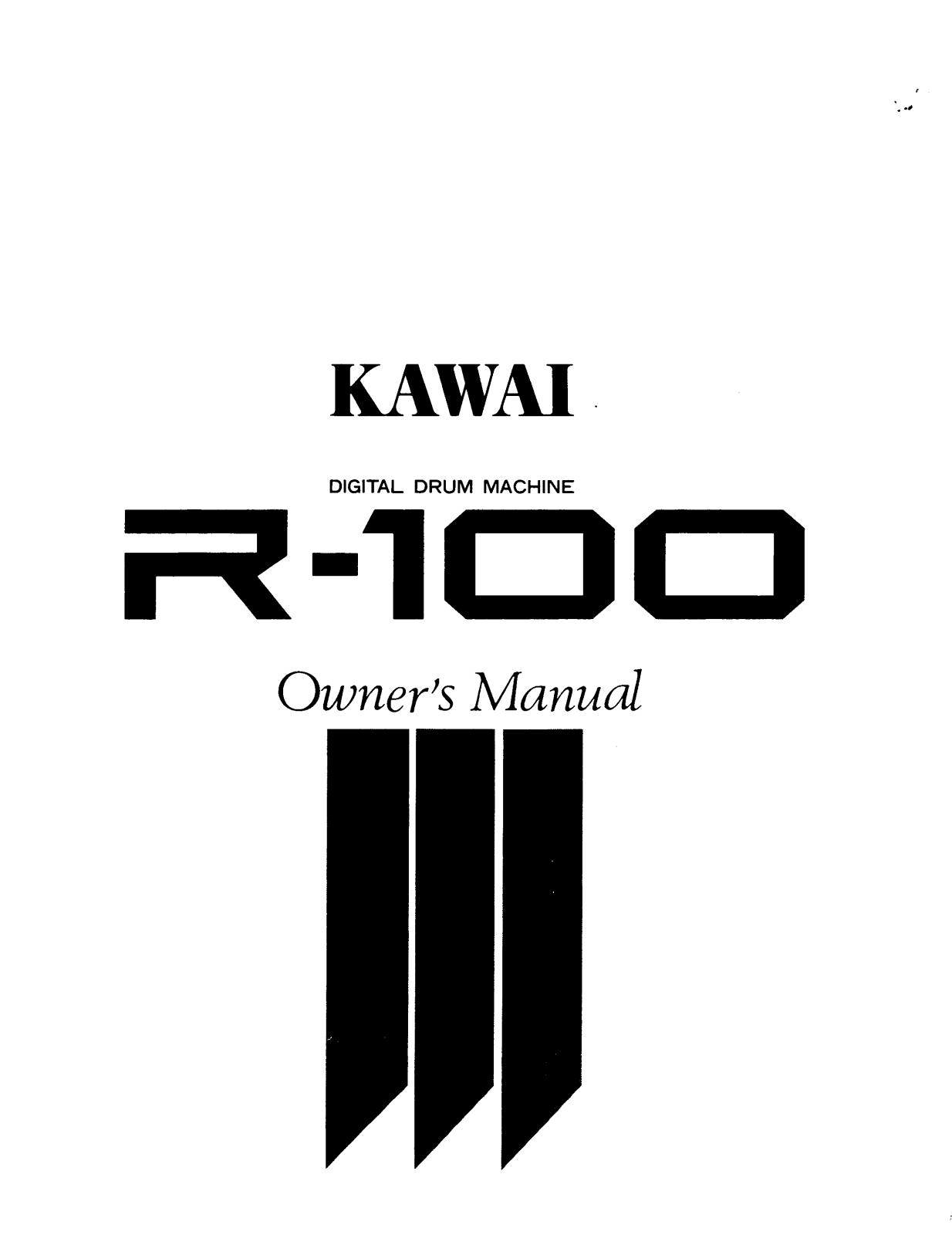
Page 2
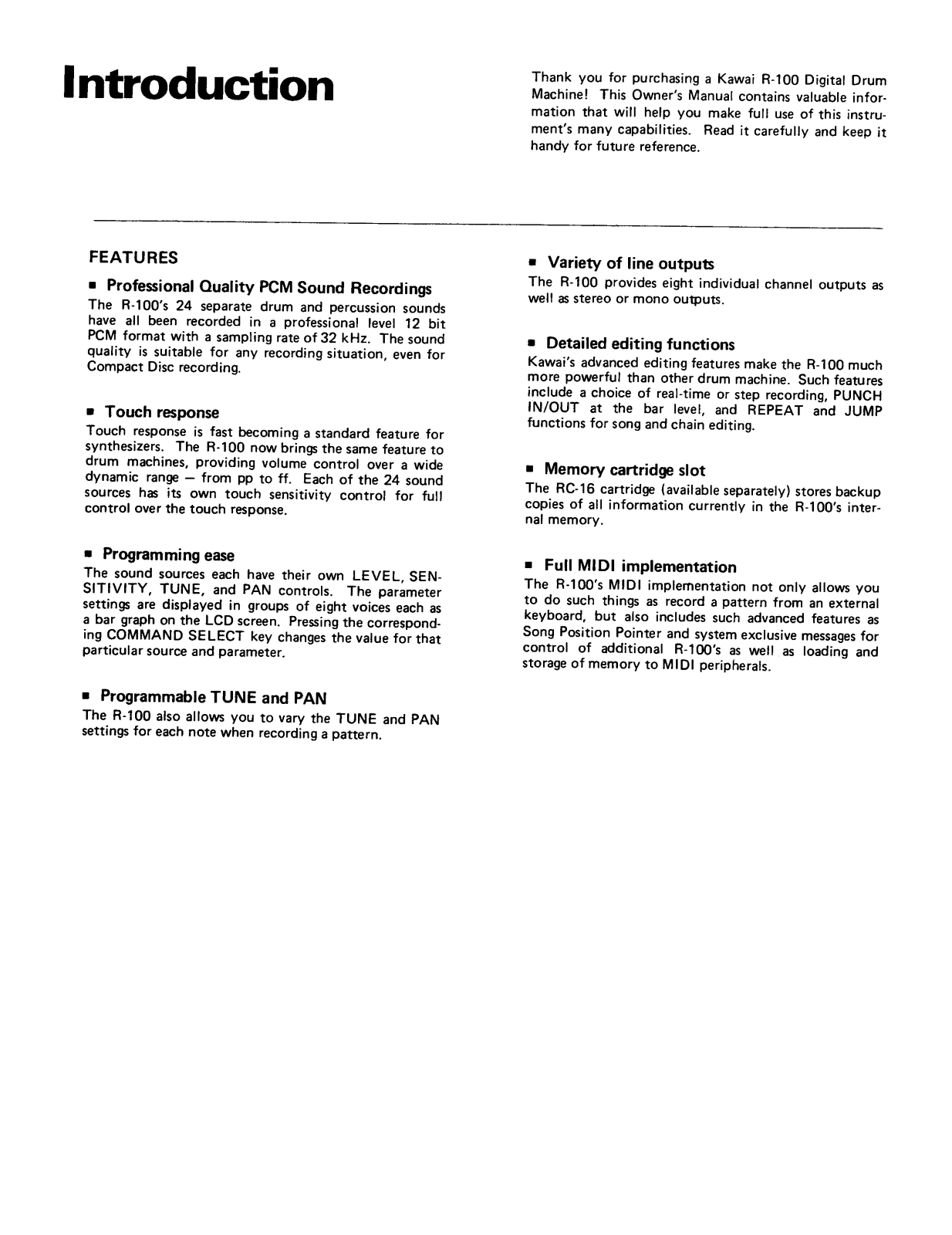
Page 3
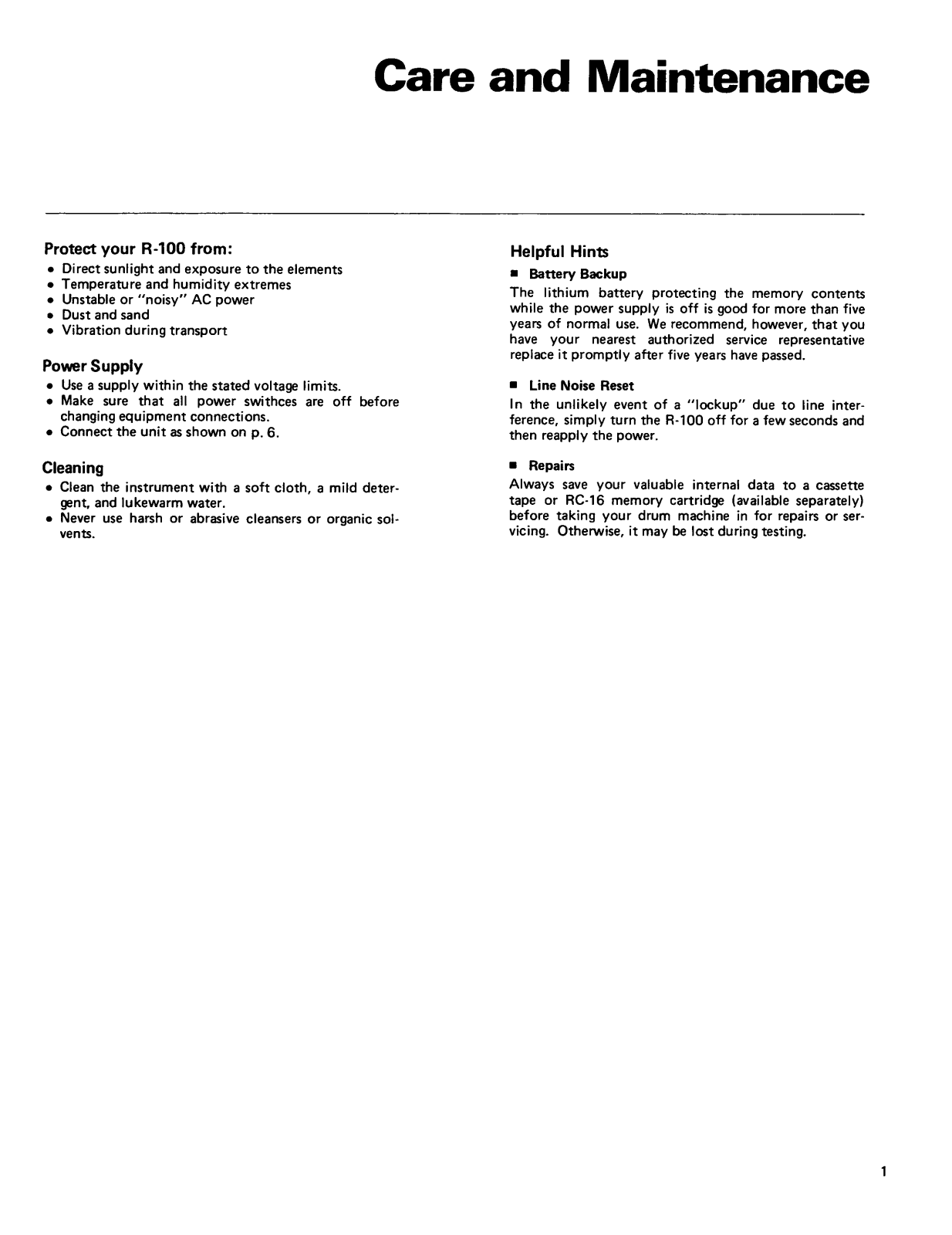
Page 4
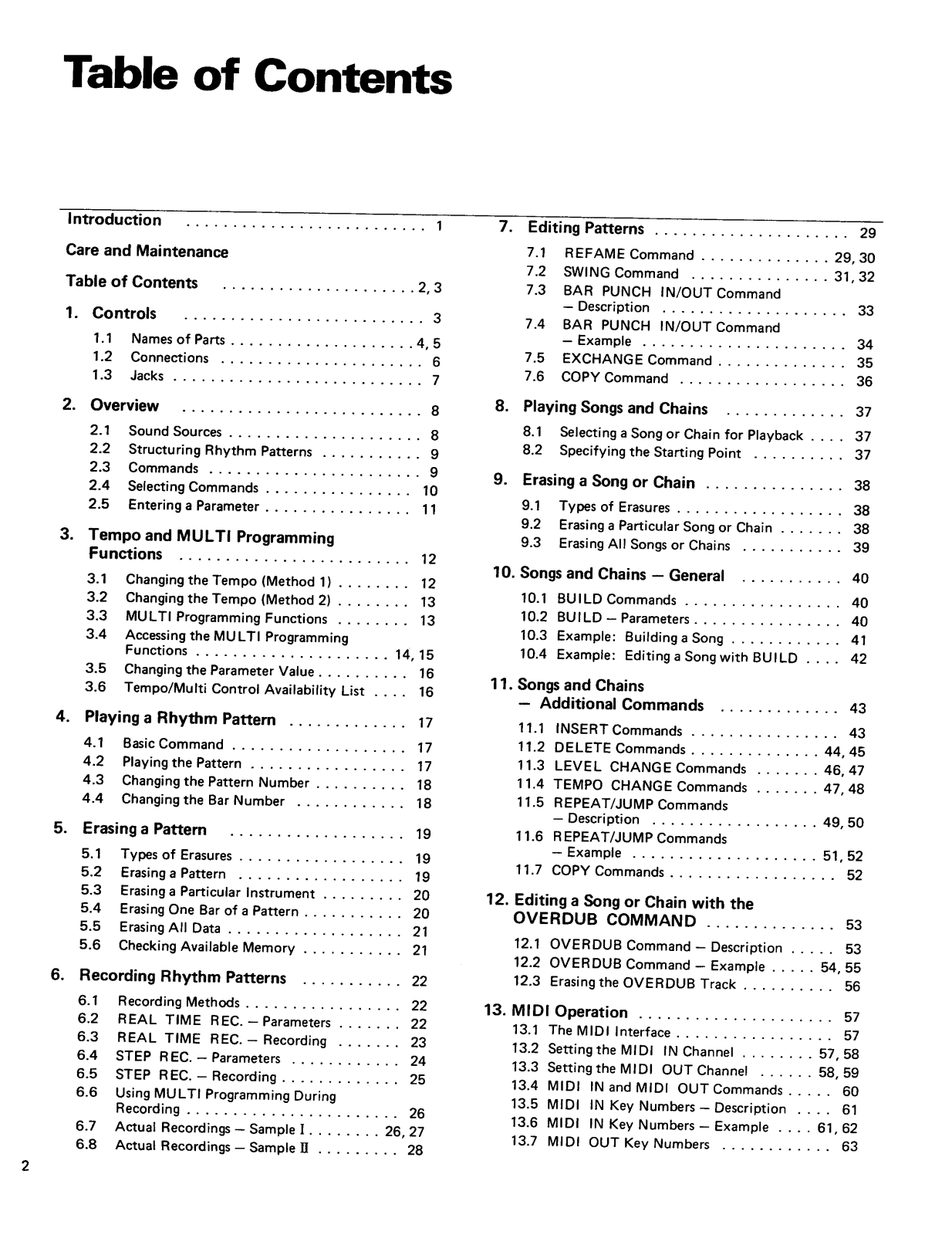
Page 5
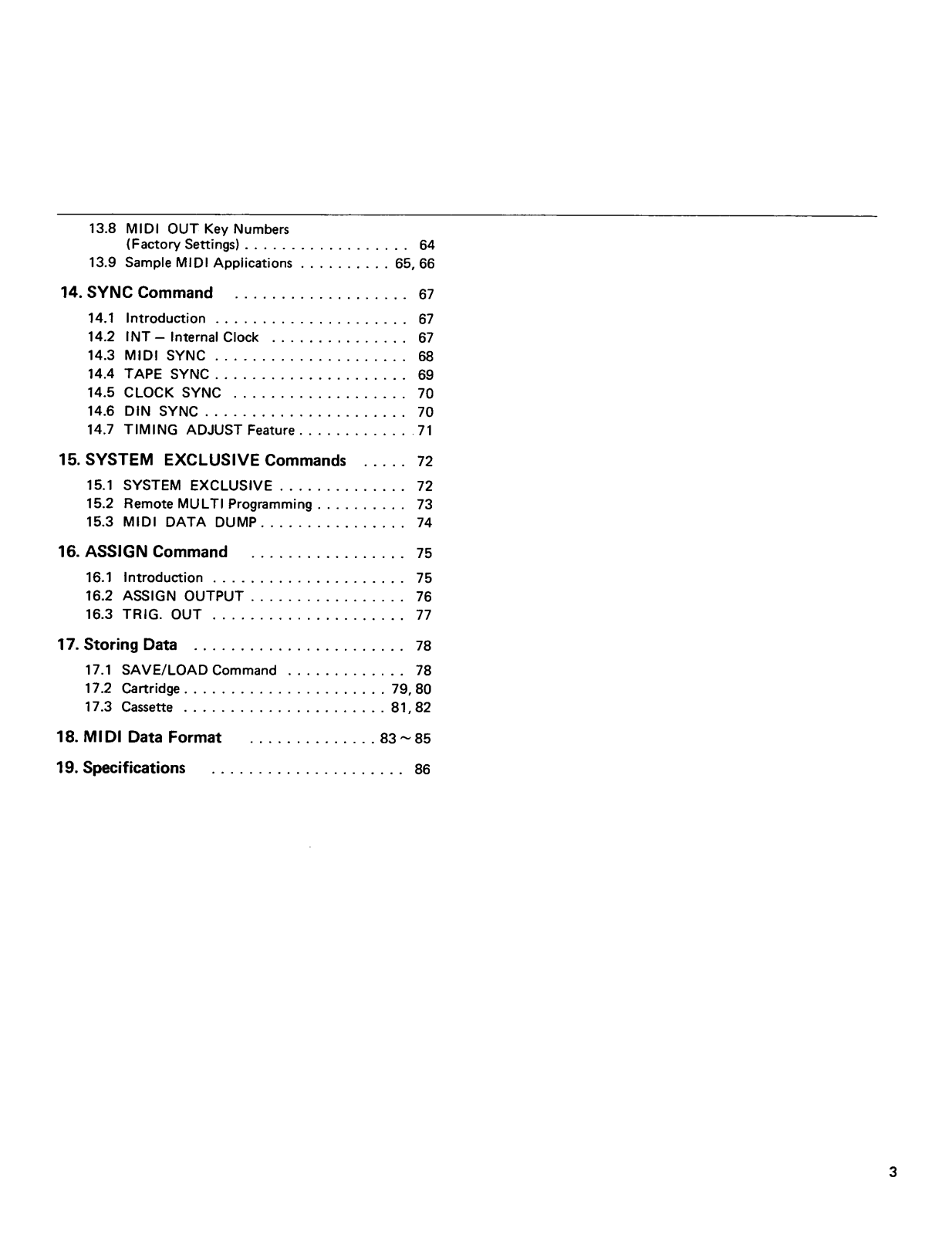
Page 6
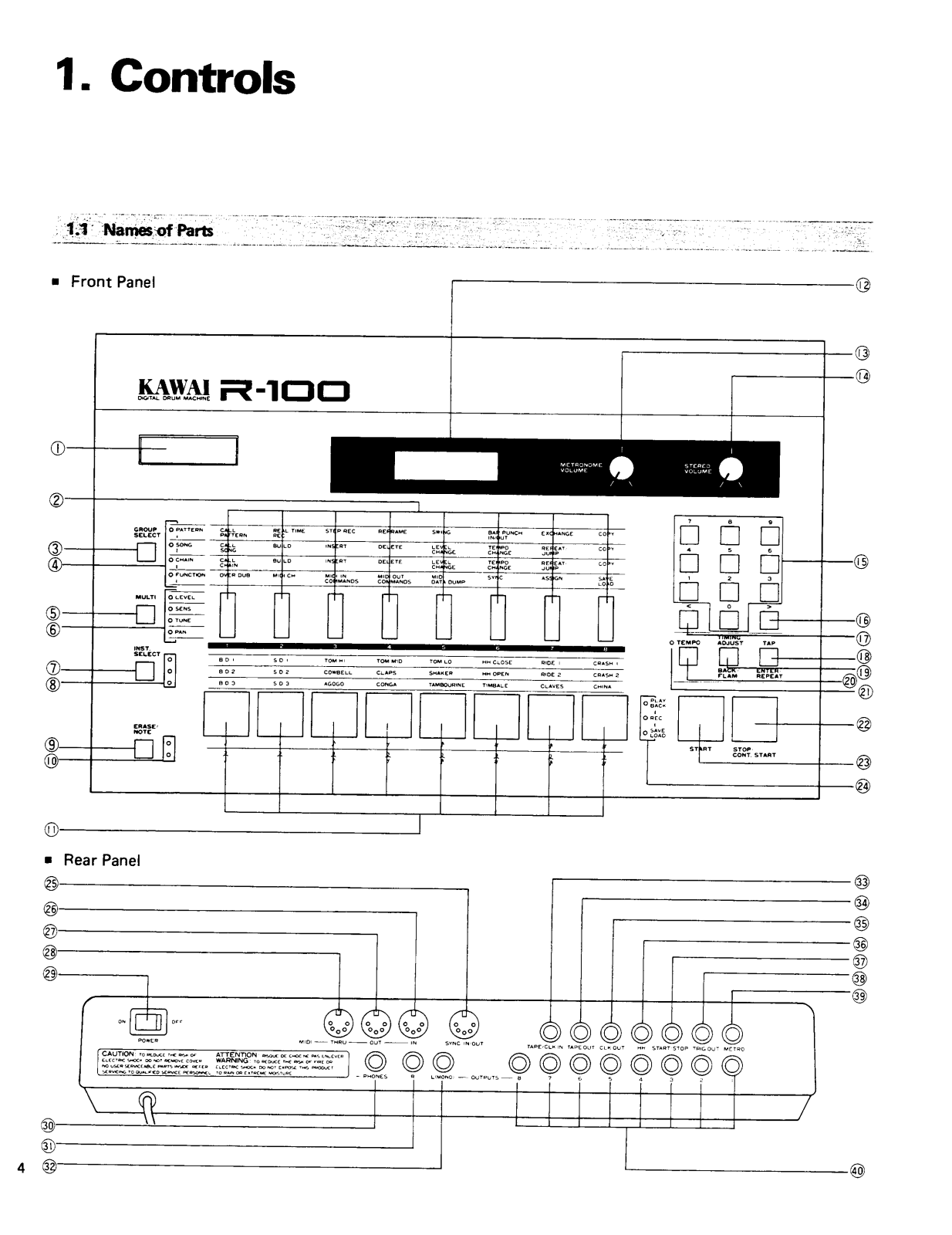
Page 7
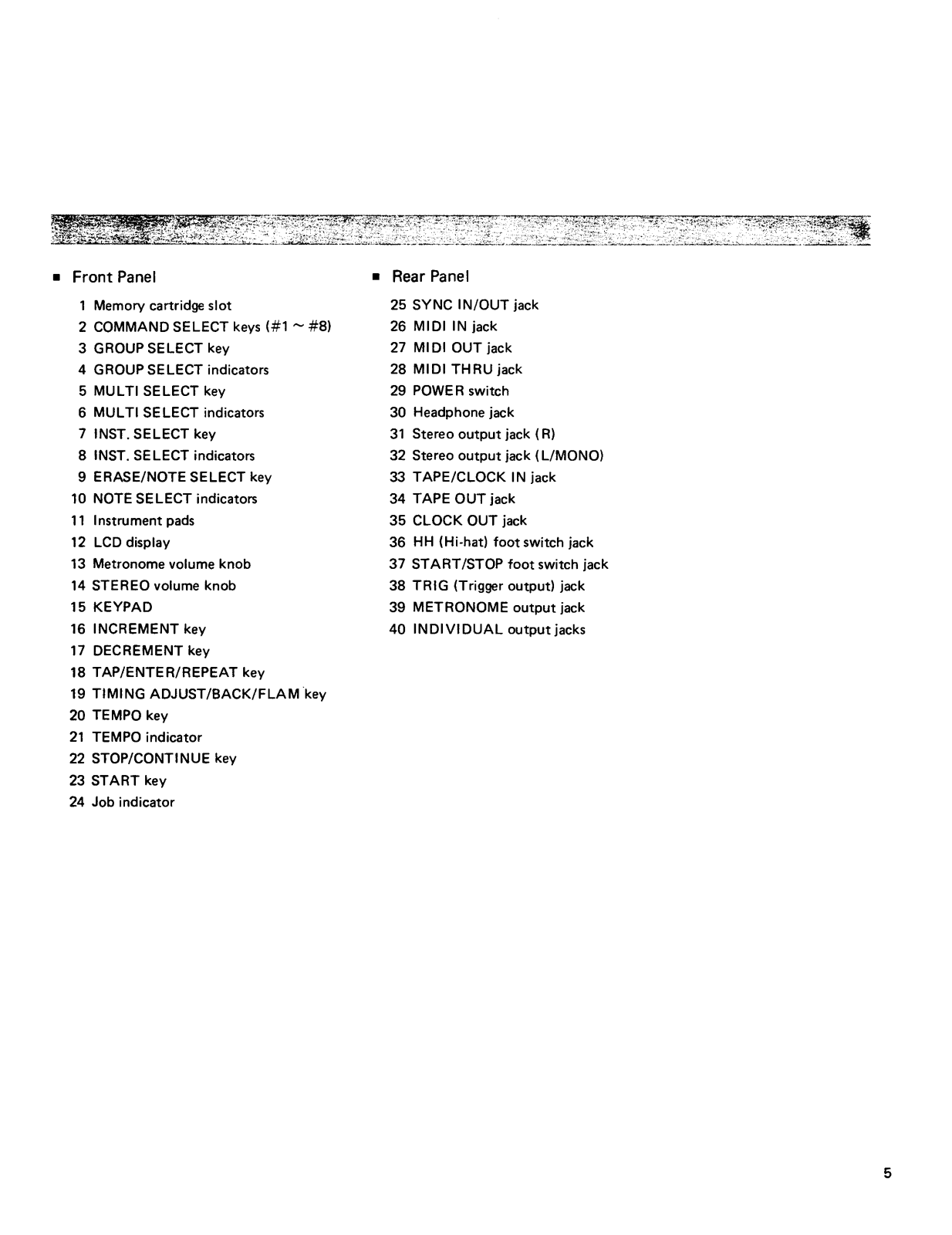
Page 8
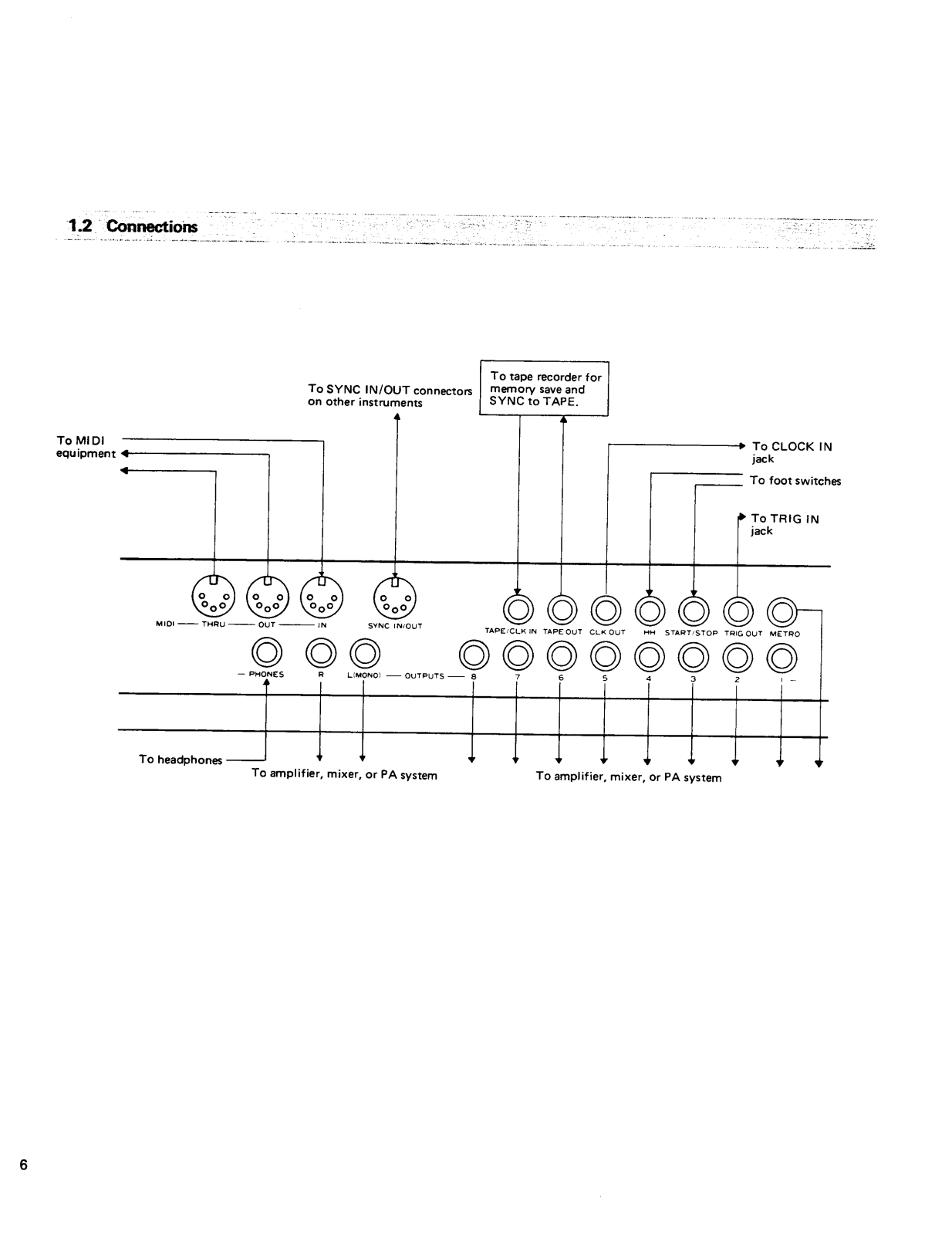
Page 9
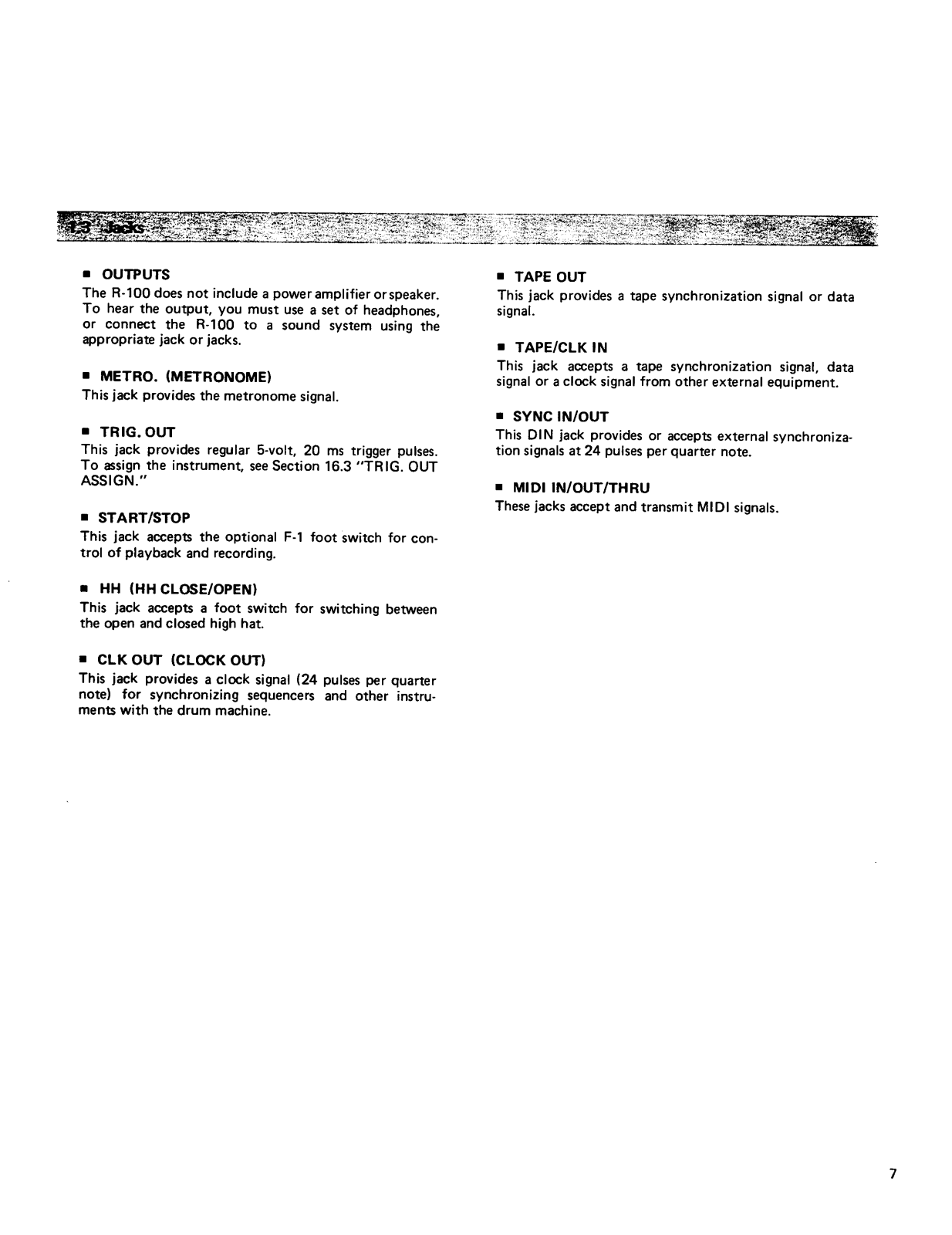
Page 10
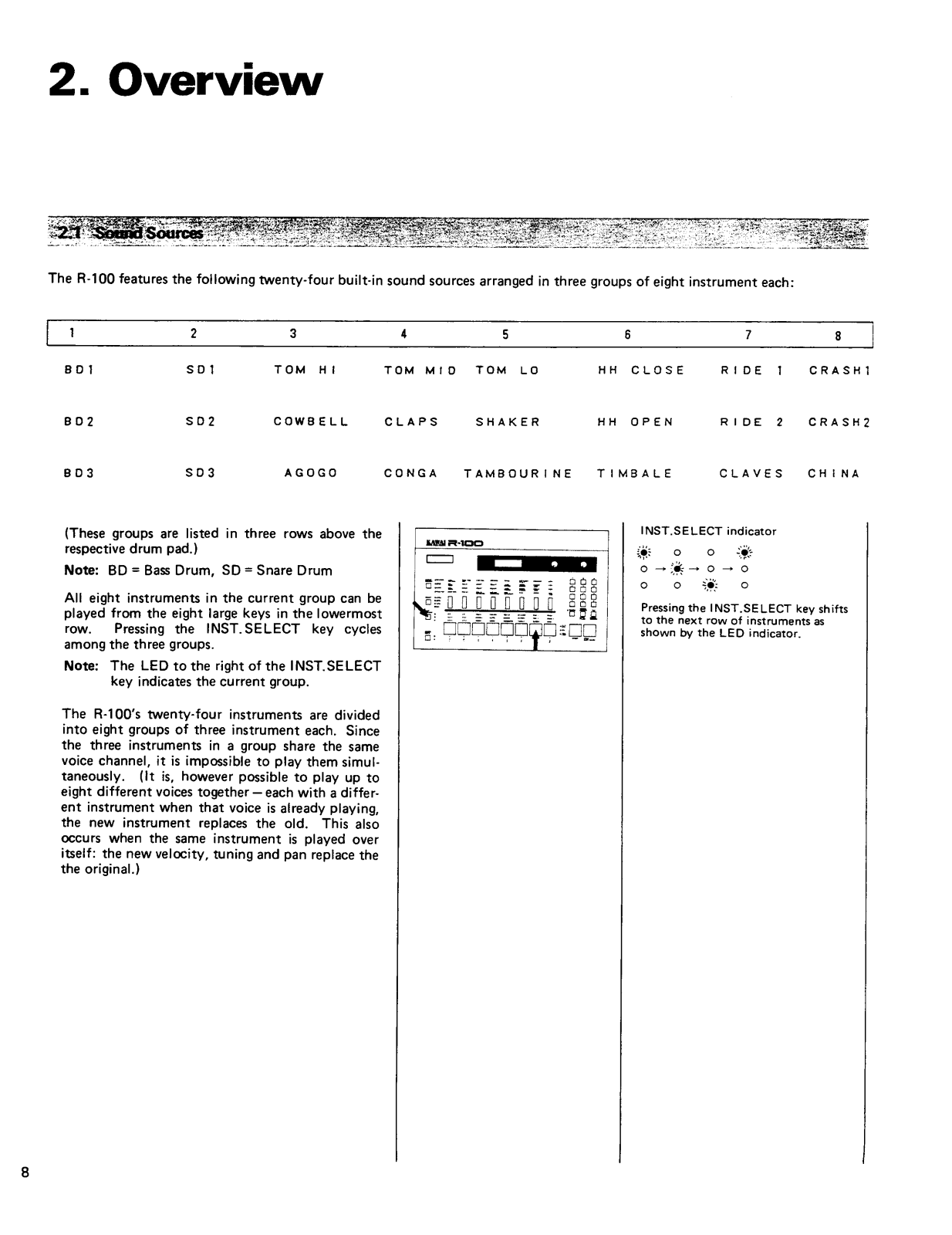
Page 11
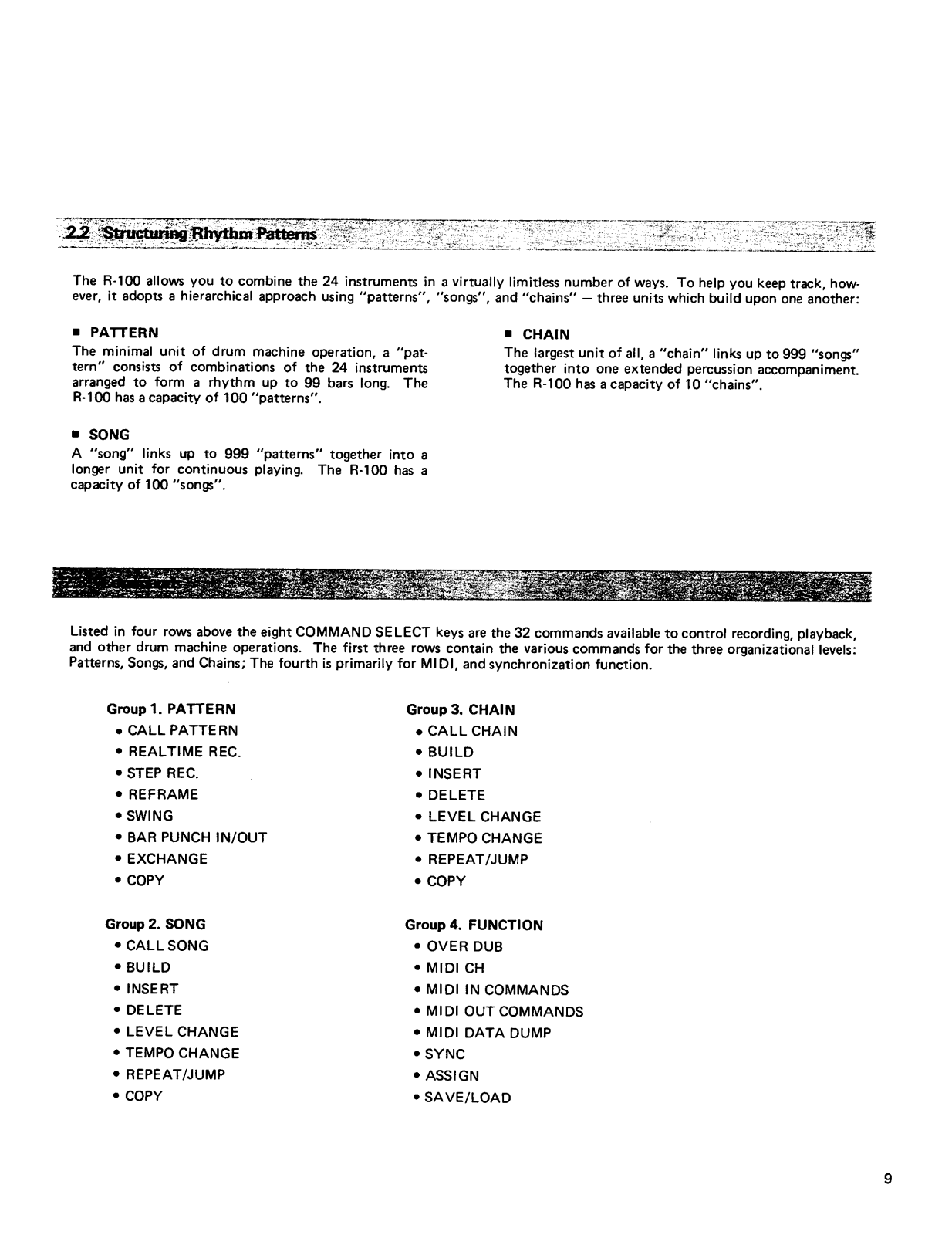
Page 12
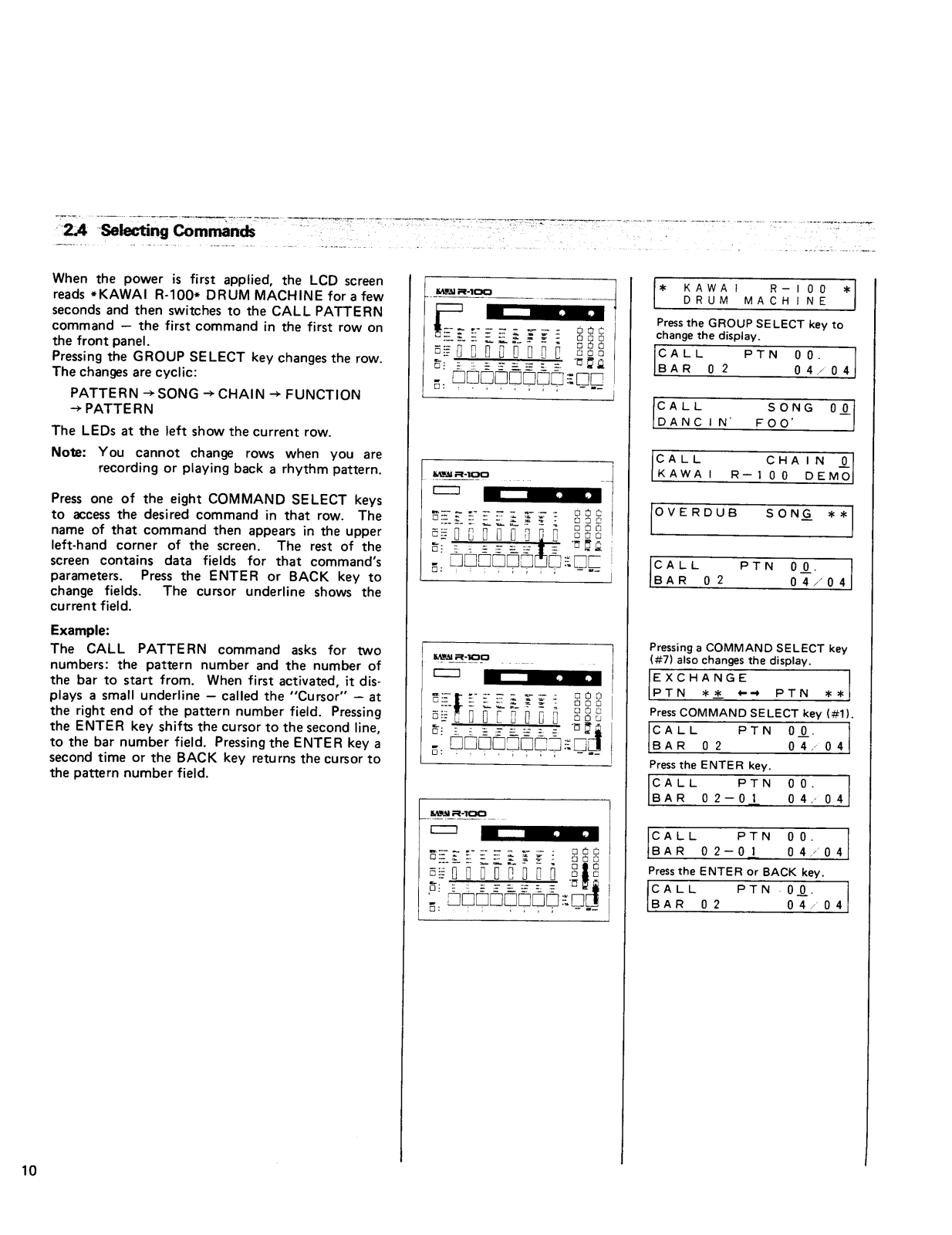
Page 13
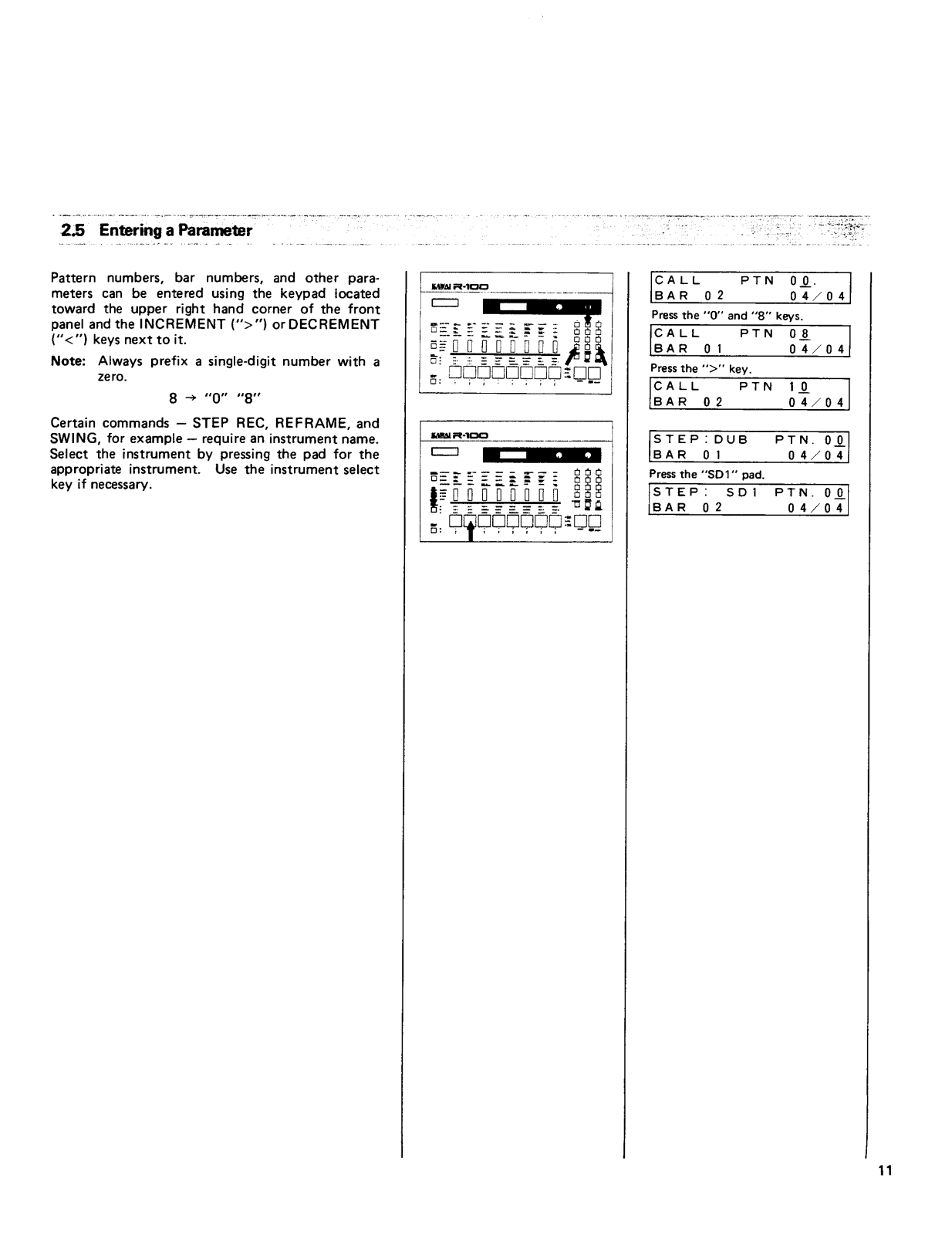
Page 14
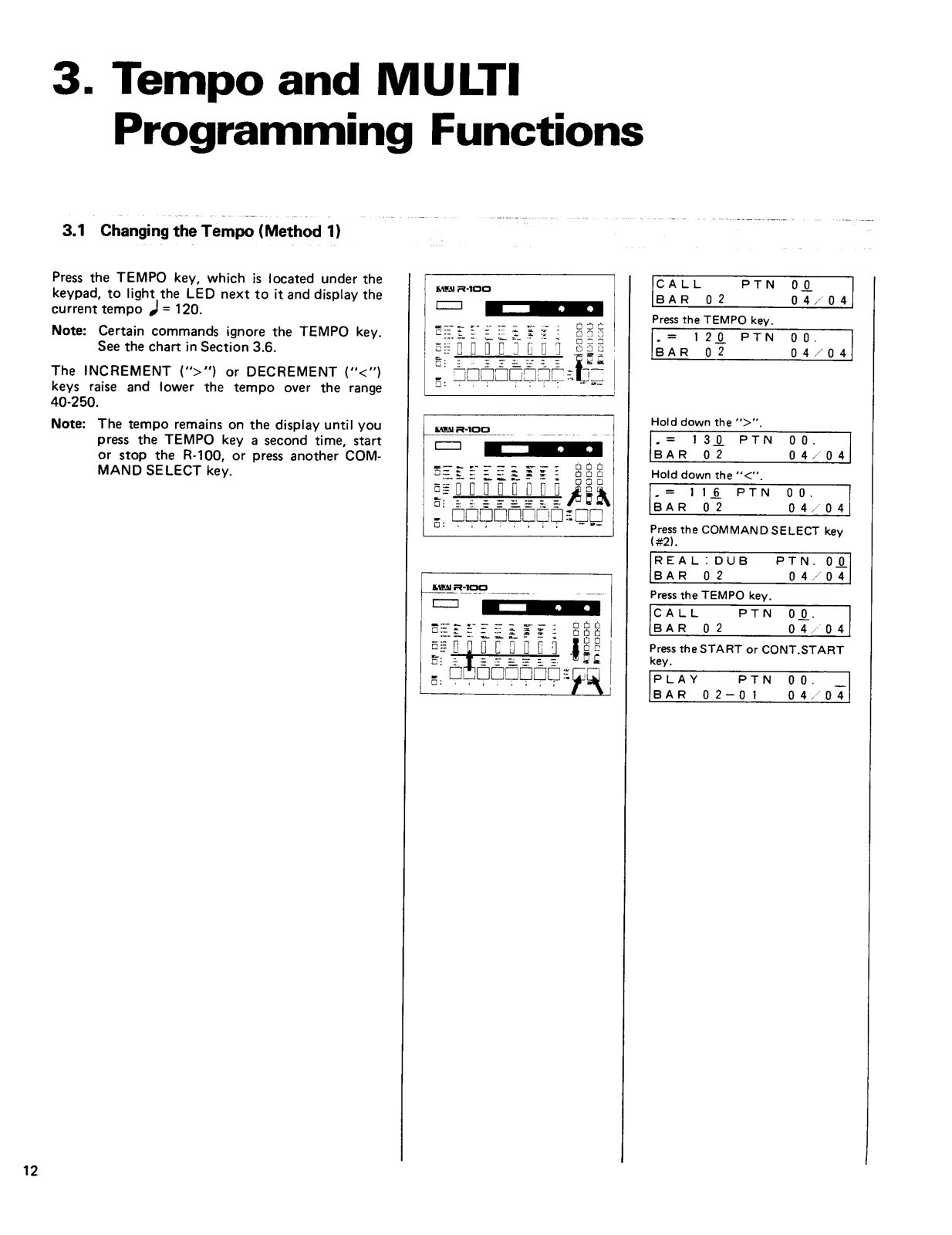
Page 15
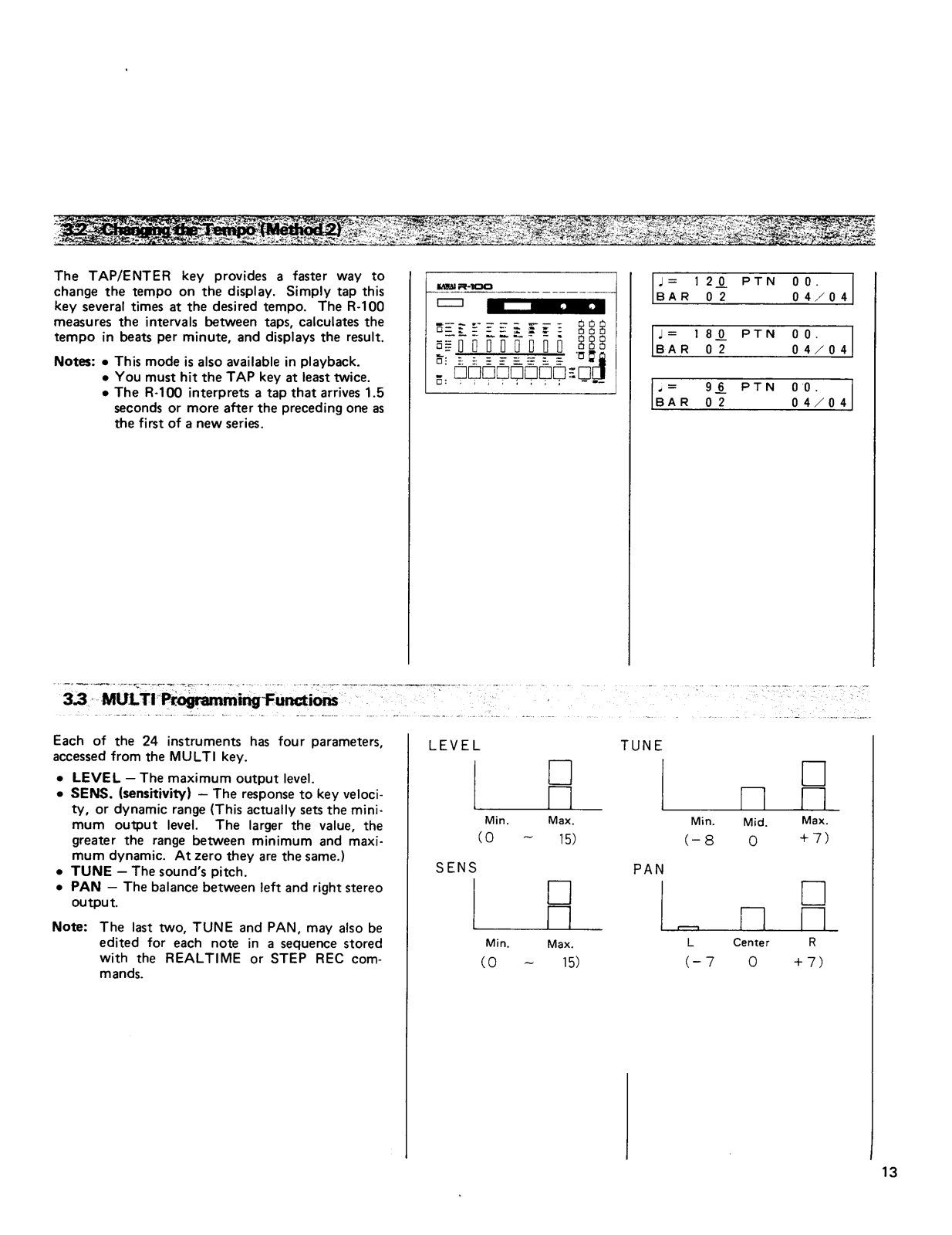
Page 16
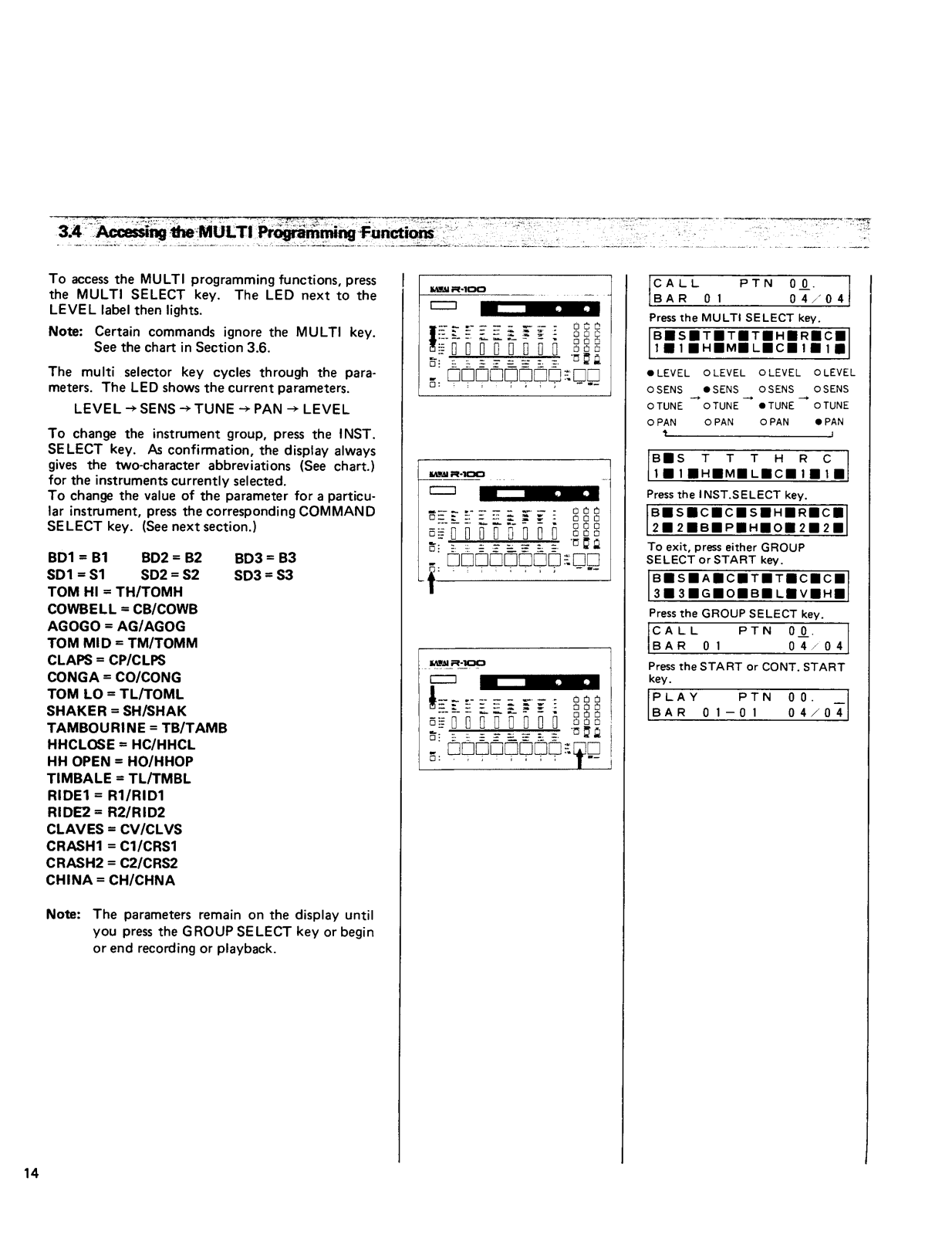
Page 17
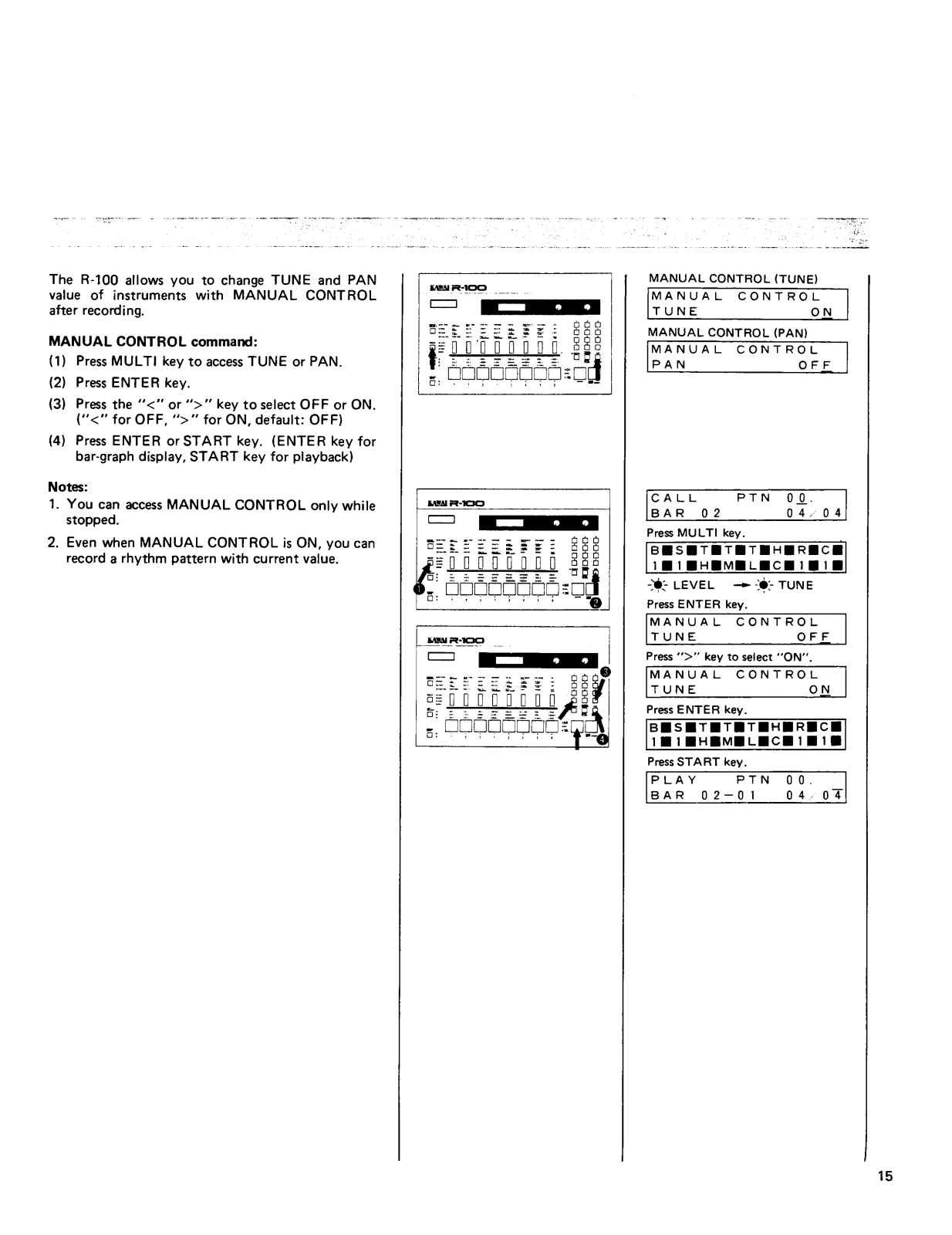
Page 18
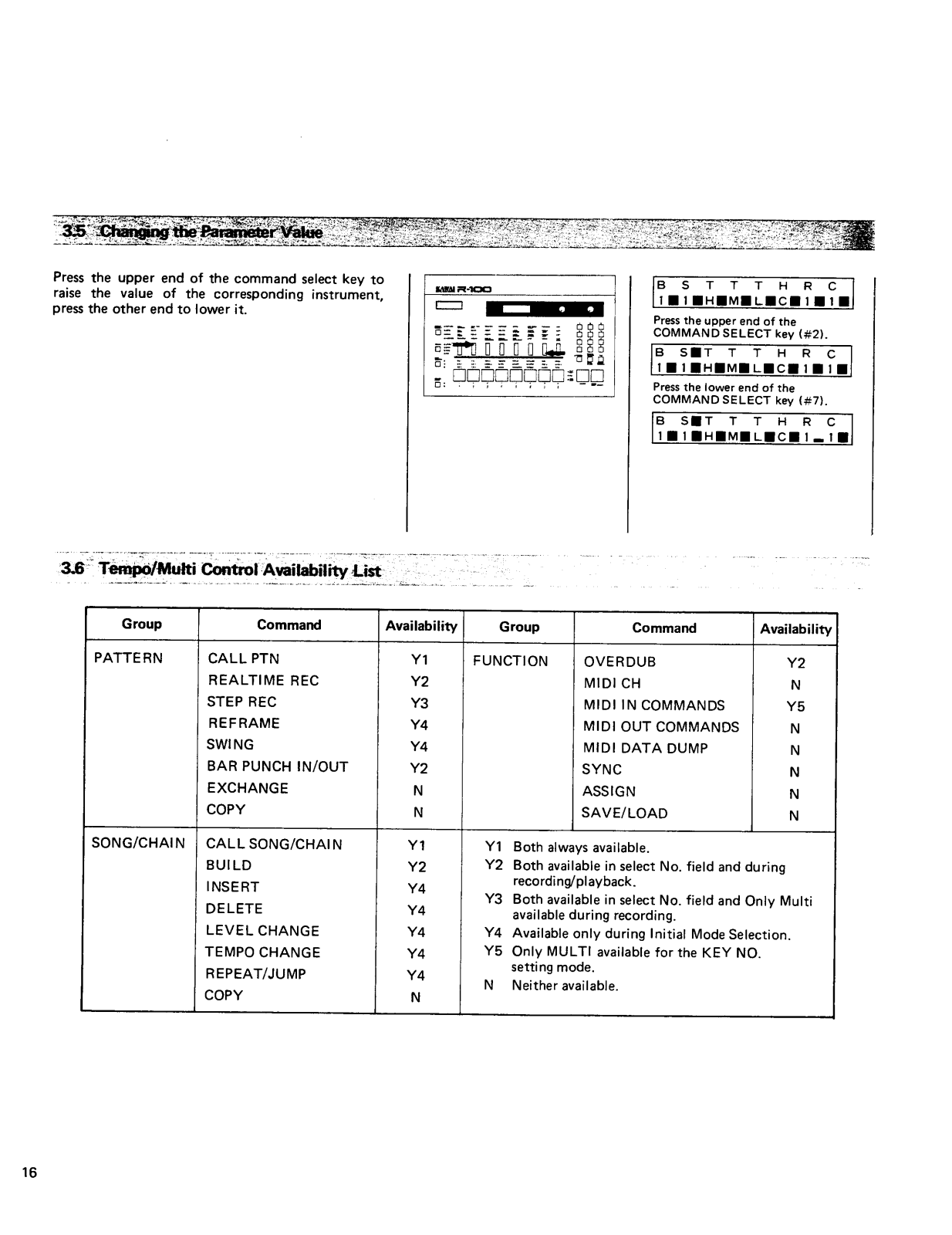
Page 19
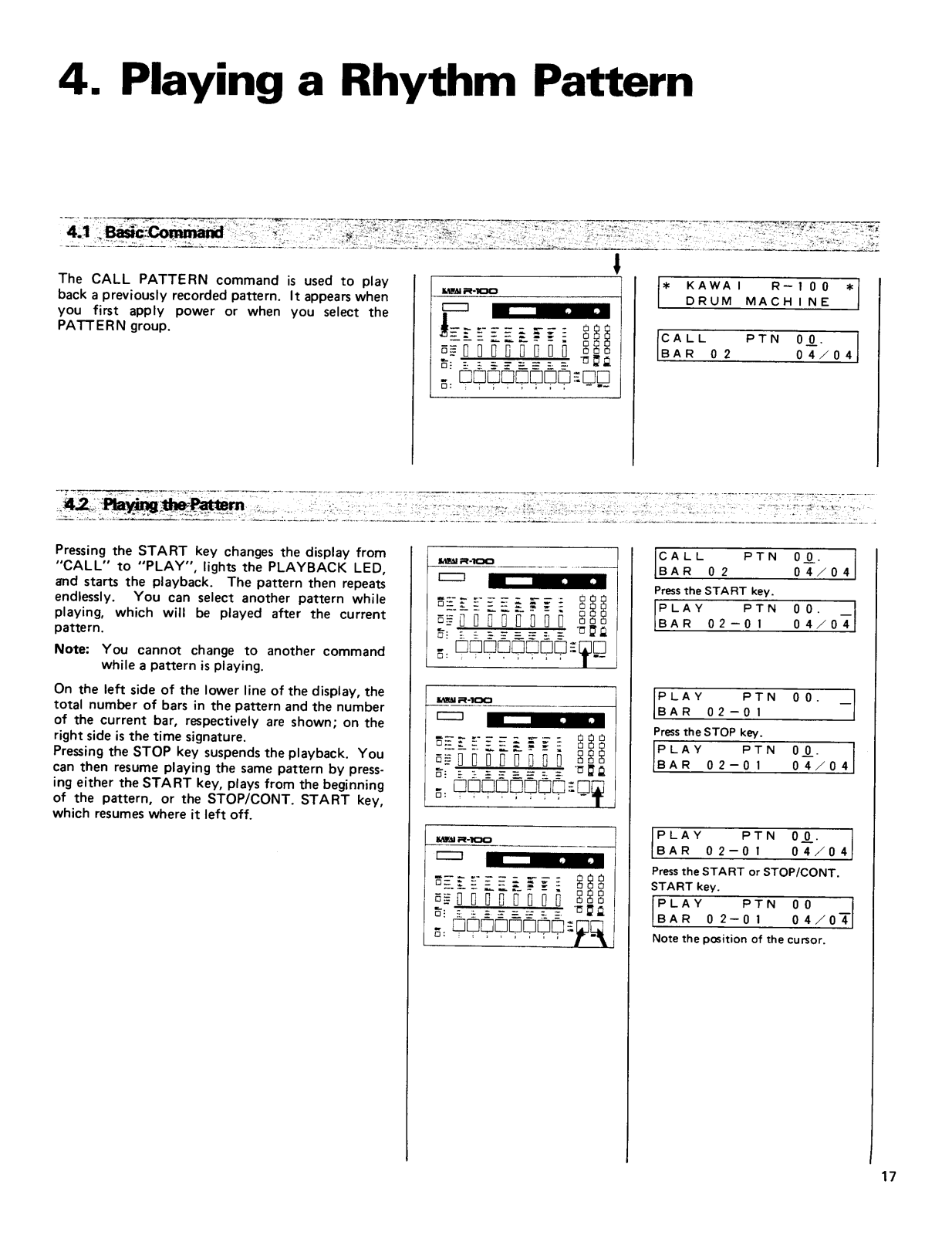
Page 20
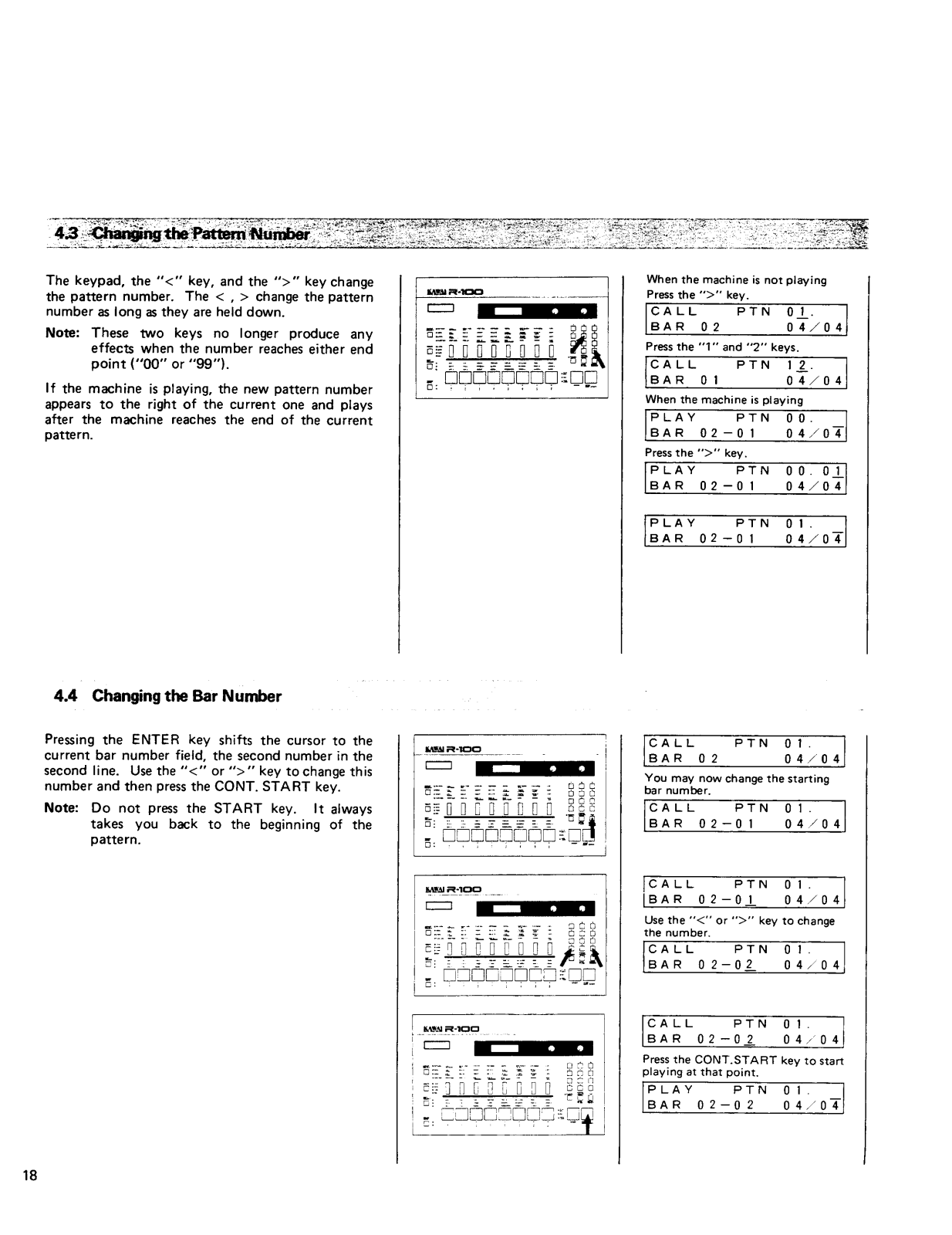
Page 21
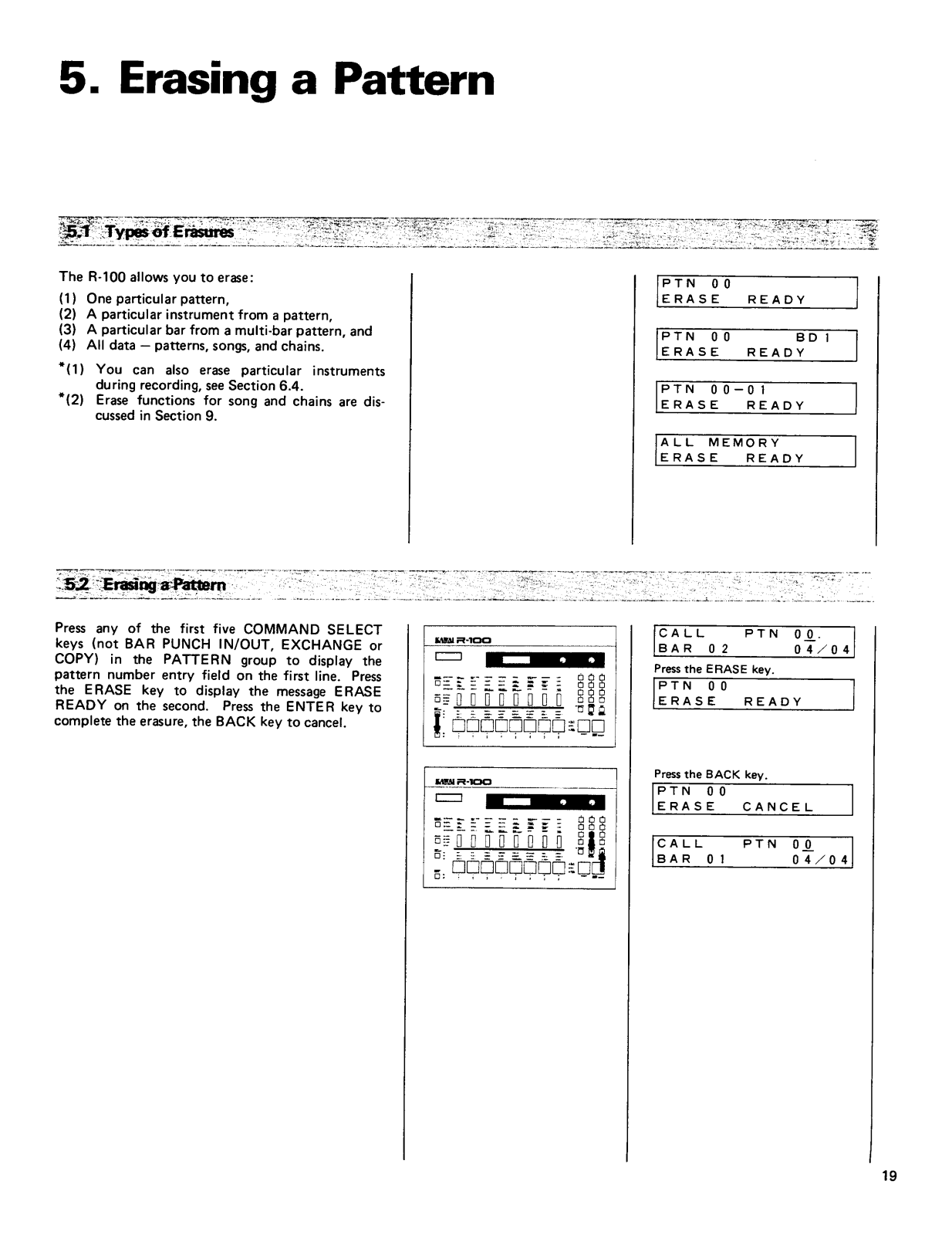
Page 22
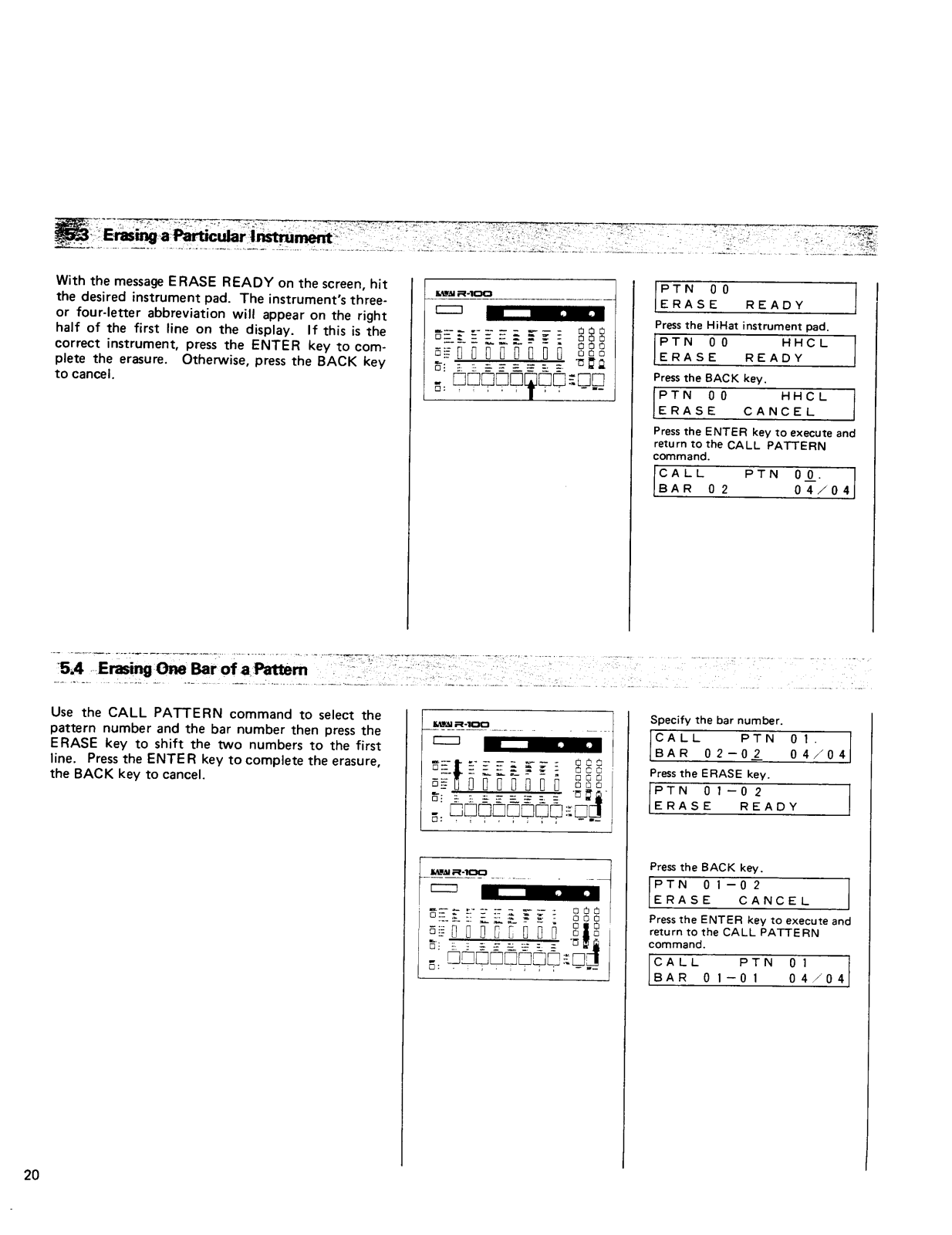
Page 23
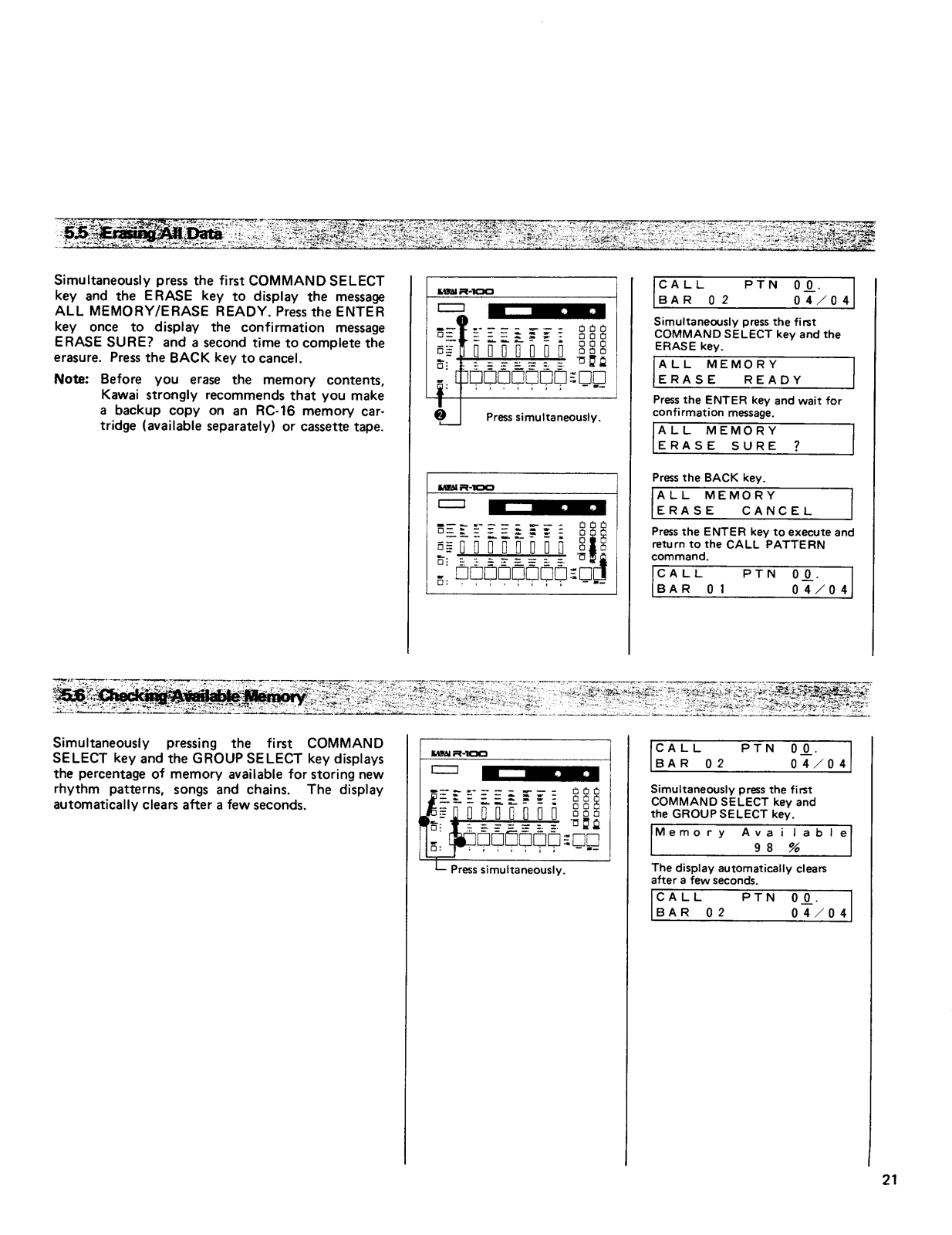
Page 24
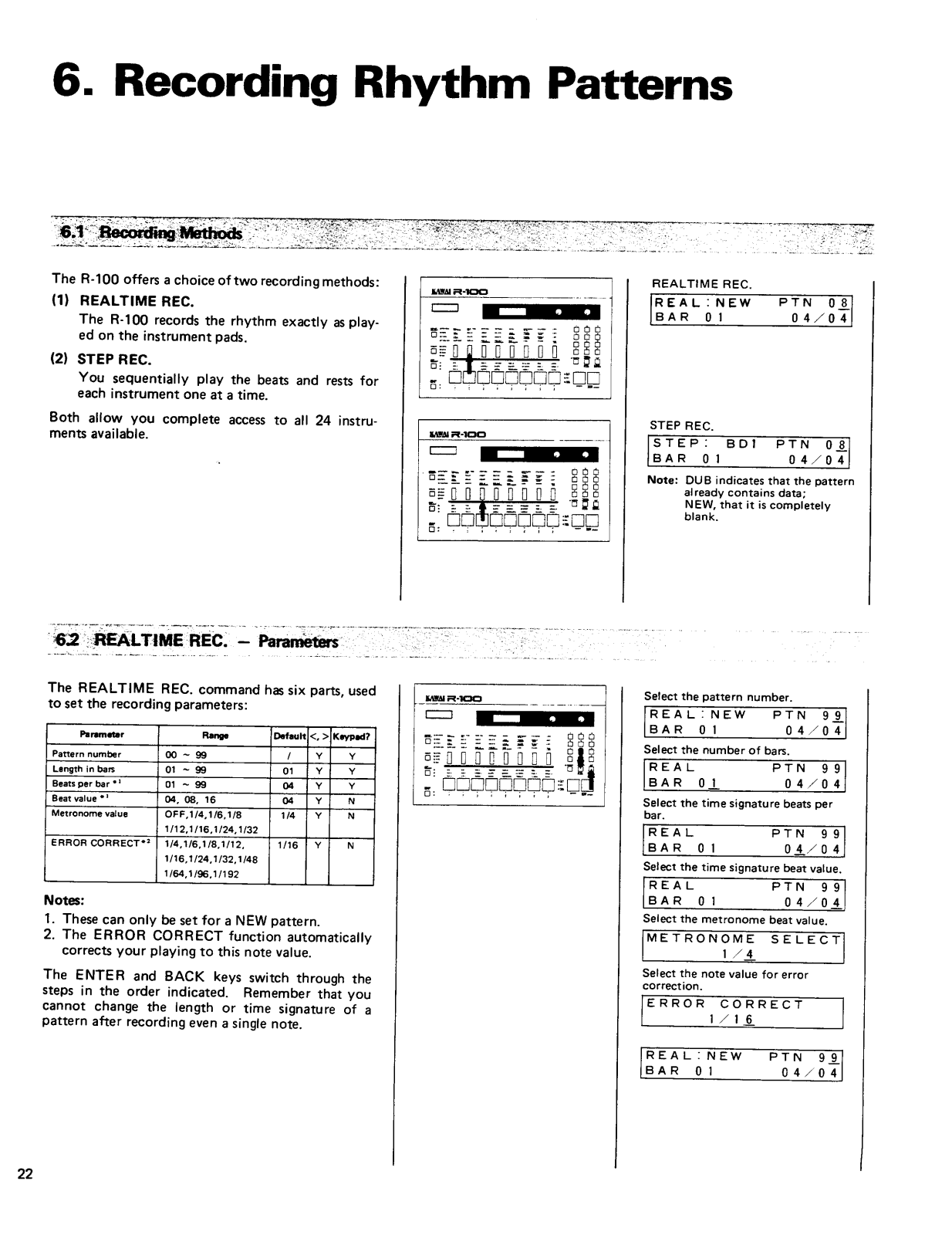
Page 25
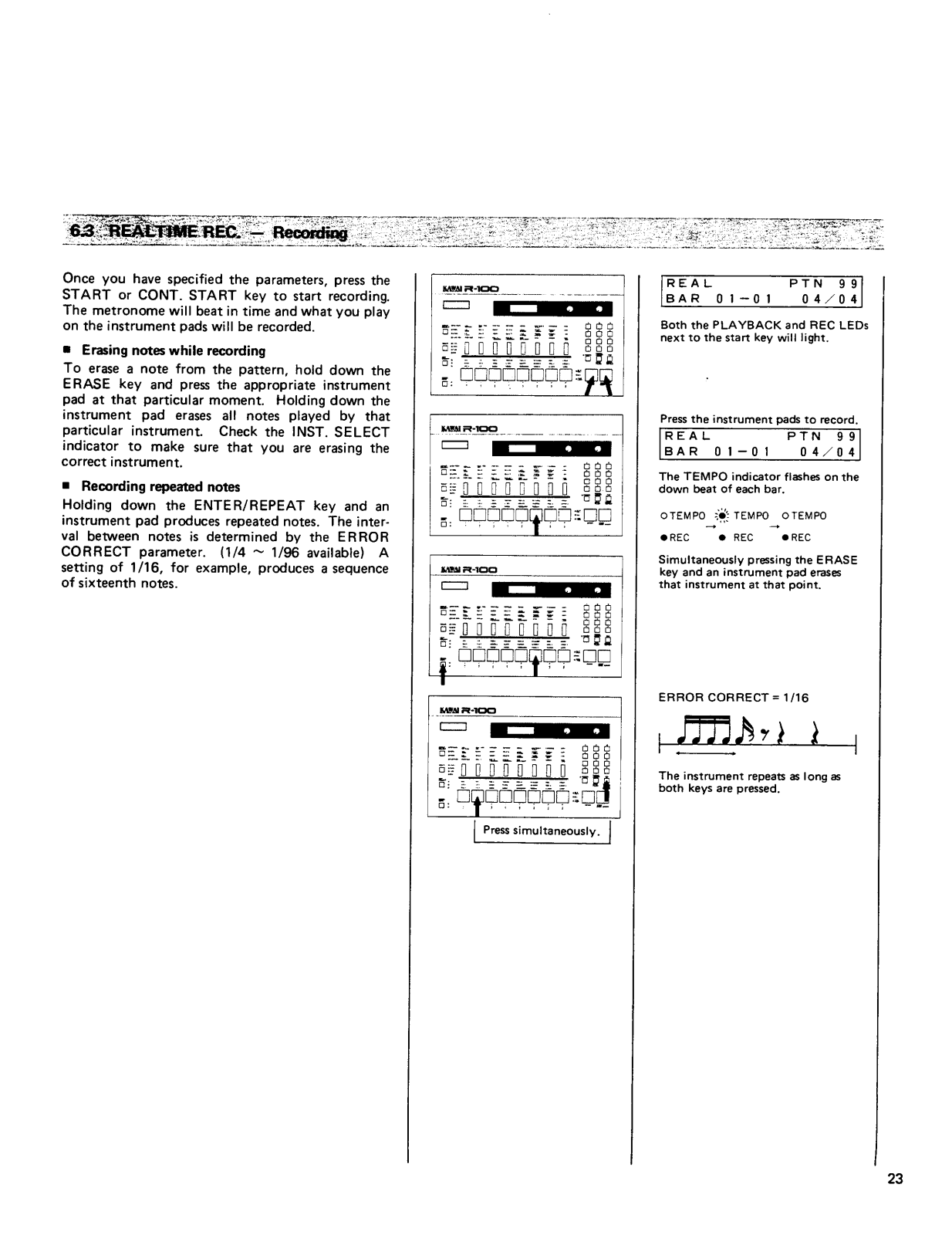
Page 26
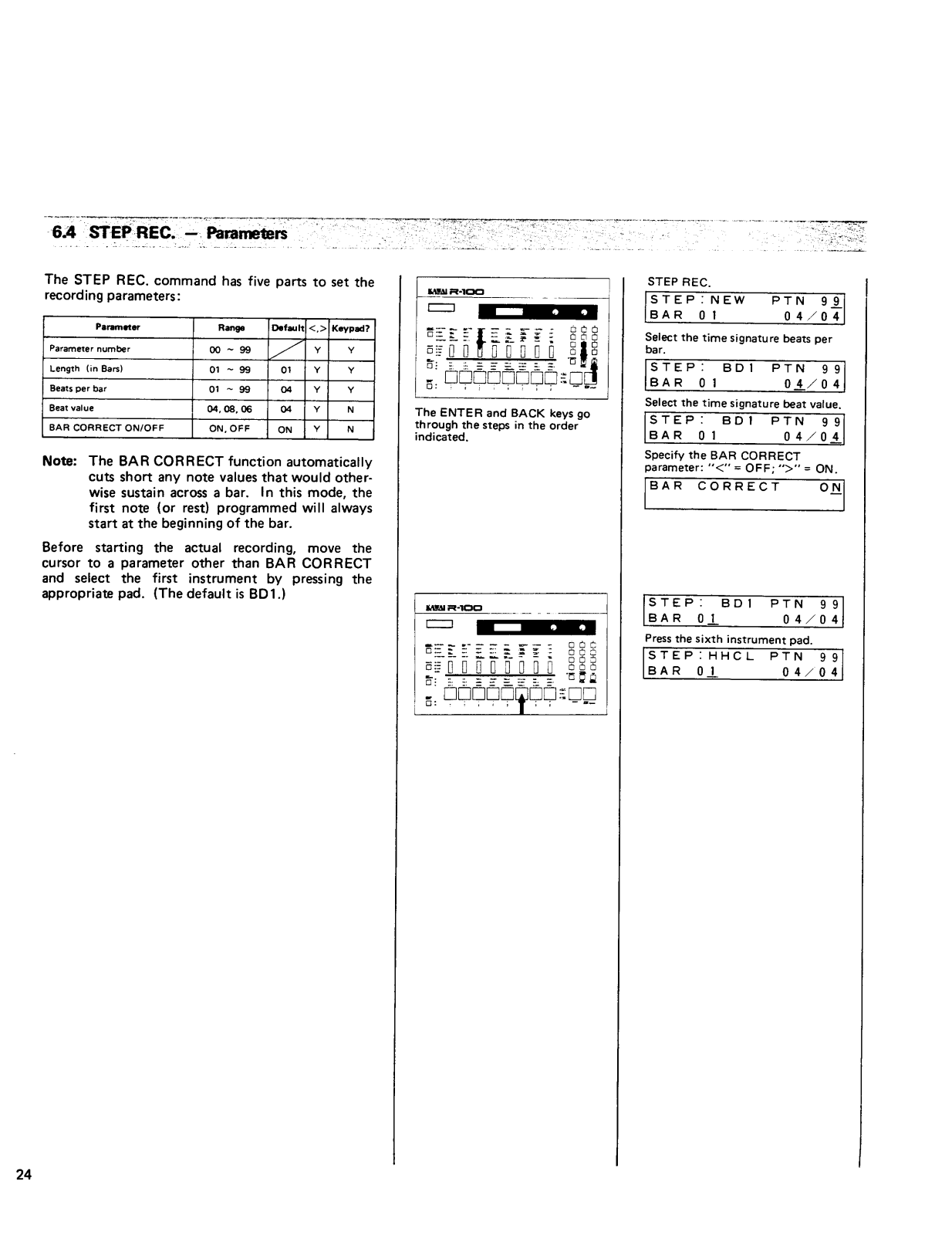
Page 27
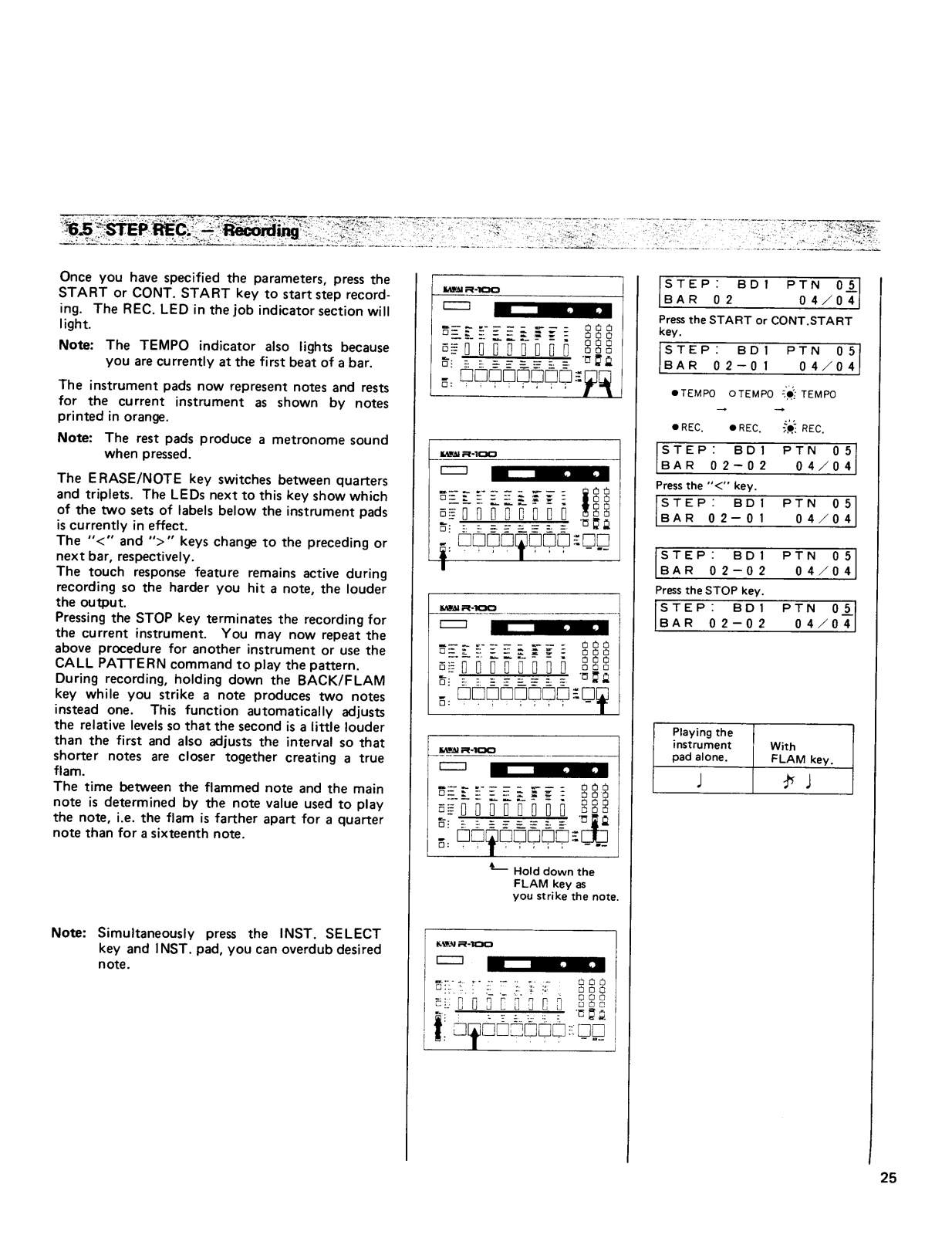
Page 28
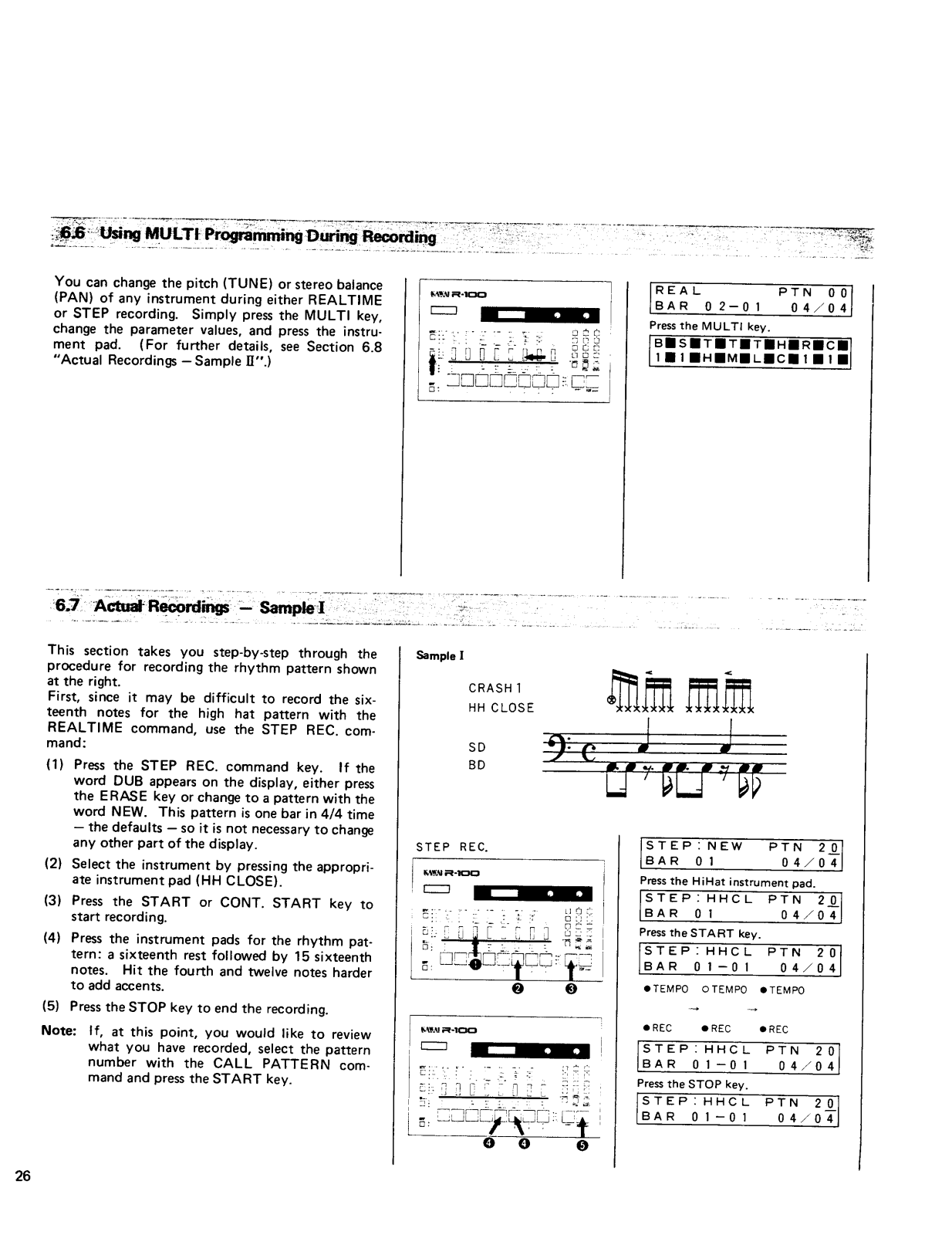
Page 29

Page 30

Page 31

Page 32

Page 33

Page 34

Page 35

Page 36

Page 37

Page 38

Page 39

Page 40

Page 41

Page 42

Page 43

Page 44

Page 45

Page 46

Page 47

Page 48

Page 49

Page 50

Page 51

Page 52

Page 53

Page 54

Page 55

Page 56

Page 57

Page 58

Page 59

Page 60

Page 61

Page 62

Page 63

Page 64

Page 65

Page 66

Page 67

Page 68

Page 69

Page 70

Page 71

Page 72

Page 73

Page 74

Page 75

Page 76

Page 77

Page 78

Page 79

Page 80

Page 81

Page 82

Page 83

Page 84

Page 85

Page 86

Page 87

Page 88

Page 89

Page 90

Page 91

Page 92

